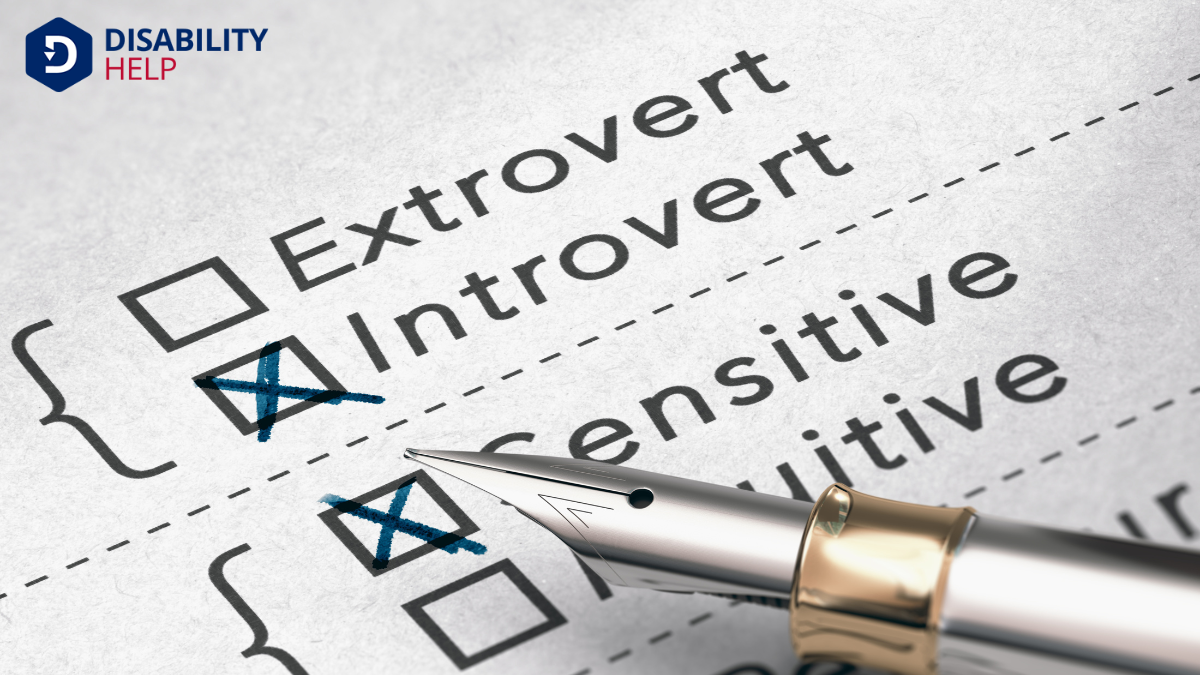When considering what qualifies as a disability, you might be surprised to learn that not all conditions fit the bill. Temporary medical issues, lifestyle choices, and socioeconomic disadvantages can all impact daily life, but they aren't typically classified as disabilities. Age-related changes, common personality traits, mild allergies, and even cultural barriers fall into this category, too. So, what truly defines a disability? It's time to explore the nuances and discover what sets them apart.
Key Takeaways
- Temporary medical conditions are not considered disabilities due to their short duration and reversible nature.
- Lifestyle choices, such as smoking and excessive drinking, are personal decisions, not disabilities.
- Socioeconomic disadvantages, despite their impact, are external factors and not classified as disabilities.
- Age-related changes, like vision decline, are natural and expected, not disabilities.
- Mild allergies and sensitivities, causing minor discomfort, do not qualify as disabilities.
Temporary Medical Conditions
While it might seem confusing, temporary medical conditions aren't classified as disabilities. You might wonder why, especially when dealing with the discomfort they can cause.
The key difference lies in duration and impact. Disabilities are typically long-term or permanent, affecting daily life considerably over time. Temporary conditions, like a broken leg or the flu, are expected to resolve with proper treatment and time. They're challenging, yes, but they don't alter your life permanently.
Understanding this distinction helps you see why certain protections and accommodationsModifications or adjustments in healthcare settings to support patients with disabilities. are reserved for disabilities. It's not about downplaying temporary conditions but recognizing the ongoing challenges that disabilities present.
When you know the difference, you can better navigate healthcare discussions and advocate for yourself or others effectively.
Lifestyle Choices and Habits

Although it might seem surprising, lifestyle choices and habits aren't considered disabilities. When you choose to engage in behaviors like smoking, excessive drinking, or leading a sedentary lifestyle, these are seen as personal decisions rather than conditions that a disability would cover.
Disabilities typically involve physical or mental impairments that substantially limit one or more major life activities. In contrast, lifestyle choices are perceived as within your control and potentially modifiable through personal effort or intervention.
Even though these choices can lead to health issues, they don’t qualify as disabilities under most legal definitions. It’s important to recognize the distinction between what can be changed by altering habits and what's beyond your control due to genuine physical or mental limitations.
This understanding helps clarify the support and resources needed.
Socioeconomic Disadvantages
Facing socioeconomic disadvantages isn't classified as a disability, even though it can greatly impact one's life. You might struggle with limited access to education, healthcare, and job opportunities. These issues can create barriers that affect your ability to thrive.
Living in poverty can lead to stress, poor nutrition, and inadequate housing, further complicating your situation.
While these challenges are significant, they don't meet the criteria for disability as defined by law. You may feel the effects of these disadvantages deeply, but they're often seen as external factors rather than inherent impairments.
It's important to recognize that socioeconomic status can shape your experiences and opportunities in profound ways, even if it's not labeled as a disability. Understanding this can foster empathyThe ability to understand and share the feelings of another, particularly important in understanding... and drive meaningful support.
Age-Related Changes
Just as socioeconomic disadvantages can shape your life, age-related changes also bring about challenges that don't qualify as disabilities. As you age, your body undergoes natural changes. You might notice your vision isn't as sharp or your hearing isn't as keen. These are typical signs of aging but aren't considered disabilities.
Your energy levels may dip, and physical activities that were once easy might now require more effort. While these changes can affect your daily life, they don't meet the criteria for disabilities because they're expected parts of aging.
It's important to adaptA grassroots disability rights organization in the U.S. that focuses on promoting community-based se... by staying active and seeking regular health check-ups. Embrace these changes as part of life's journey, knowing they're shared experiences that connect you with others in similar stages.
Common Personality Traits

While everyone possesses a unique blend of personality traits, not all of them are considered disabilities. You might be introverted, extroverted, or somewhere in between—these traits shape your interactions but don't define your abilities.
A tendency to be organized, spontaneous, or adventurous reflects personal preferences and approaches to life, not limitations. You may find yourself naturally more empathetic or logical, preferring facts over feelings, or vice versa. These differences create the rich tapestry of human expression and interaction.
Recognizing these traits helps you understand yourself and others better, fostering acceptance and appreciation for diversityThe inclusion of individuals from a wide range of backgrounds, including people with disabilities.. It's important to remember that personality traits are variations, not deficiencies.
They guide how you navigate the world, offering insights into your strengths and areas for growth.
Mild Allergies and Sensitivities
You might think that all allergies qualify as disabilities, but that's a common misconception.
Mild allergies and sensitivities usually don't disrupt daily life to the extent required for disability classification.
Instead, you can manage these everyday challenges with practical solutions and lifestyle adjustments.
Common Allergy Misconceptions
Have you ever wondered why mild allergies and sensitivities often aren't considered disabilities? It's a common misconception that they qualify in that manner. To clarify, here's why they usually don't meet the criteria:
- Severity: Mild allergies typically cause minor discomfort rather than significant impairmentA loss or abnormality of a body structure or function, whether physical, mental, or sensory, often a....
- Manageability: Many mild allergies can be controlled with over-the-counter medications or simple lifestyle adjustments.
- Permanence: Some mild allergies can be temporary, diminishing over time or with exposure to certain treatments.
- Impact on Daily Life: Disabilities often limit daily activities; mild allergies usually don't reach this level of interference.
Understanding these distinctions helps clarify why mild allergies and sensitivities are treated differently from more severe conditions that qualify as disabilities.
Sensitivity vs. Disability
Steering the line between sensitivity and disability can be tricky, especially when it comes to mild allergies and sensitivities. You may wonder when these issues cross into the domain of disability. Mild allergies, like a slight reaction to pollen or certain foods, often cause discomfort but don't necessarily limit major life activities.
Sensitivities are similar; they might require you to make adjustments, like avoiding certain perfumes or dust, but they're not typically categorized as disabilities.
Understanding the difference is essential. Disabilities greatly impact your daily life and require accommodations, whereas sensitivities and mild allergies might just need minor lifestyle tweaks.
Recognizing this distinction helps you better navigate your needs and communicate them effectively. It guarantees you know when it’s appropriate to seek further support or adjustments.
Managing Everyday Allergies
Distinguishing between sensitivities and disabilities highlights the importance of managing everyday allergies effectively. You might experience mild allergies or sensitivities, but they don't always reach the level of a disability. Managing them can improve your daily life without overwhelming you.
Here are some steps to reflect on:
- Identify Triggers: Pay attention to foods, environments, or substances that cause reactions. Keeping a journal can help.
- Avoid Allergens: Once identified, take steps to avoid these triggers, like choosing safe foods or using air purifiers.
- Consult Professionals: Seek advice from allergists or dermatologists for personalized guidance.
- Use Remedies: Over-the-counter antihistamines or nasal sprays can alleviate symptoms if avoidance isn't enough.
Cultural and Language Barriers
You might face challenges with language misunderstandings and misinterpretations, which can lead to confusion in communication.
Cultural differences often influence how messages are received, impacting your ability to connect effectively.
Steering through multilingual work environments requires you to adapt quickly and find ways to bridge these gaps.
Language Misunderstandings and Misinterpretations
Although cultural richness brings vibrancy to communities, language misunderstandings can create significant barriers to effective communication. You might encounter situations where messages are lost or distorted.
To navigate these challenges, consider the following:
- Listen Actively: Pay attention to what’s being said and seek clarification if needed. This helps bridge understanding.
- Simplify Language: Use clear, straightforward language. Avoid idioms or jargon that may not translate well.
- Non-Verbal Cues: Be mindful of body language. It can support or contradict spoken words, offering additional context.
- Feedback: Encourage others to provide feedback. It guarantees your message is understood as intended.
Cultural Differences Impacting Communication
When traversing cross-cultural communication, understanding cultural differences is key to avoiding misunderstandings. Recognize that cultural norms shape how people express themselves. For instance, directness might be valued in some cultures, while others prefer indirect communication.
Pay attention to body language; gestures that seem innocuous to you might be offensive in another culture.
Also, be mindful of context. High-context cultures rely heavily on implicit communication and shared experiences, whereas low-context cultures focus on explicit verbal expression. Misinterpretations can occur when you assume your way of communicating is universal.
To bridge these gaps, practice active listening and ask clarifying questions. Show respect for cultural diversity by being open-minded and adaptable.
Effective cross-cultural communication enhances relationships and fosters mutual understanding.
Navigating Multilingual Work Environments
In today’s globalized workplace, language diversity presents both challenges and opportunities.
When maneuvering through multilingual environments, you need strategies to guarantee that potential barriers are overcome. Here are a few tips:
- Encourage Learning: Promote learning basic phrases in colleagues' languages. This shows respect and fosters camaraderie.
- Use Clear Communication: Opt for simple words and avoid idioms or slang, which can confuse non-native speakers.
- Leverage Technology: Utilize translation apps and tools to ensure everyone understands key points.
- Provide Training: Offer language support or cultural training sessions to enhance understanding and inclusivity.
Conclusion
In understanding what doesn't count as a disability, you'll recognize that temporary medical conditions, lifestyle choices, and socioeconomic disadvantages fall outside this category. Age-related changes and common personality traits are natural parts of life, while mild allergies and cultural or language barriers can often be managed effectively. By distinguishing these from disabilities, you can focus on providing the right support and fostering better communication, ensuring that everyone receives the appropriate care and understanding they need.






